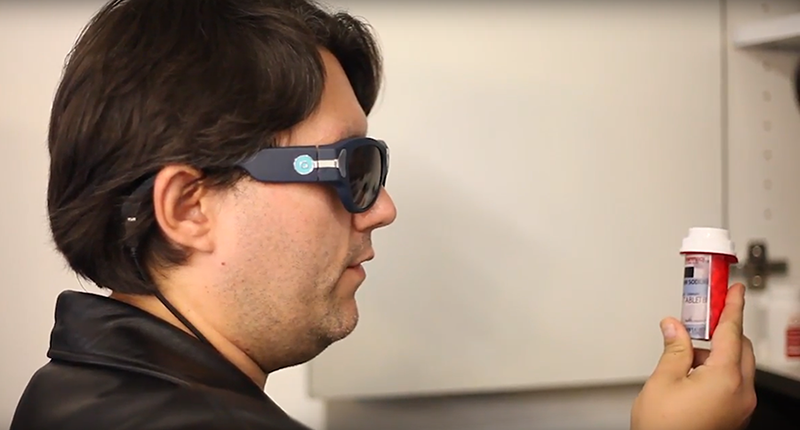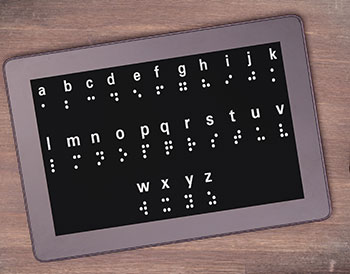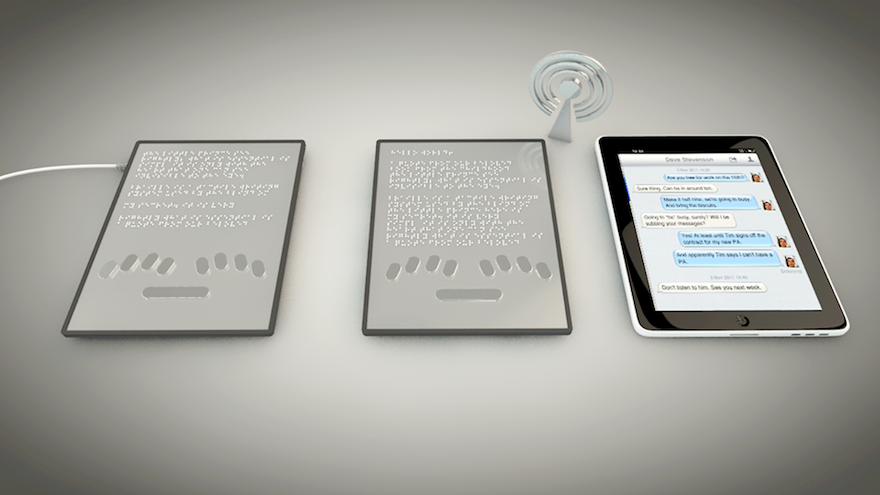OCR Devices for the Blind: Transforming Text into Speech with Ease
Wiki Article
Empowering Freedom With Assistive Modern Technology for the Blind
The integration of assistive modern technology right into the lives of individuals with aesthetic problems represents a considerable innovation in advertising freedom and self-sufficiency. From ingenious screen viewers to advanced wise canes, these tools not just boost everyday navigating and interaction yet likewise equip individuals to involve meaningfully in different elements of life. As we explore the myriad advantages and real-world applications of these modern technologies, it becomes important to analyze the hidden variables that add to their effectiveness and the capacity for future advancements in this vital field.Introduction of Assistive Modern Technology

The growth of assistive innovation is based in concepts of inclusivity and empowerment. Innovations in software, hardware, and sensory improvements offer individuals with options customized to their specific demands. From screen readers that convert message to speech, to tactile gadgets that share information via touch, these devices transform the means people involve with their environments.
Along with functional applications, assistive innovation fosters better social addition and involvement in numerous sectors, consisting of education and learning and work (Voice-activated assistive devices). As research study and advancement proceed to progress, the possibility for assistive innovation to further boost the lives of aesthetically impaired people stays encouraging, paving the way for a more fair society where everybody can flourish
Kinds Of Assistive Tools
A range of assistive tools have actually emerged to support individuals with visual disabilities, each designed to satisfy specific demands and improve everyday performance. These devices range from low-tech solutions to sophisticated advancements, supplying diverse choices for individuals.Low-tech tools consist of magnifiers and large-print products that aid in reading and writing. Braille tools, such as Braille slates and styluses, allow tactile reading and communication. Positioning and flexibility help, like white walking sticks, aid users navigate their environment safely.
On the greater end of the range, digital magnifying systems and screen readers use substantial assistance. Electronic magnifiers permit users to expand text and photos on displays, while screen visitors convert digital material into manufactured speech, assisting in access to info on computer systems and smartphones.
Mobile phone applications likewise play a vital duty, giving functions like text recognition and navigating help. Wearable modern technology, such as wise glasses equipped with increased fact, is becoming an encouraging tool to improve situational recognition.
Benefits of Assistive Technology
The combination of assistive innovation substantially enhances the high quality of life for people with visual disabilities. These innovations encourage users by advertising freedom, allowing them to browse their settings better and do everyday tasks with greater convenience. For example, screen visitors and magnifying software program enable individuals to accessibility digital details, fostering specialist and instructional opportunities that may have previously run out reach.Additionally, assistive tools such as wise walking canes and GPS applications offer real-time navigating assistance, enhancing movement and safety. This raised freedom not just enhances self-worth but additionally urges social engagement, permitting individuals to get involved even more completely in their neighborhoods.
Assistive innovation likewise promotes interaction, helping users get in touch with others through voice acknowledgment and text-to-speech applications. This capability is essential for keeping relationships and accessing crucial information.
In addition, the modification options available with lots of assistive technologies make certain that customers can customize gadgets to their details demands, additionally boosting functionality and performance. On the whole, the benefits of assistive innovation for individuals with visual impairments are extensive, advertising an extra inclusive society where everybody can seek their objectives and desires.
Study and Success Stories
Highlighting the transformative influence of assistive modern technology, numerous situation research studies illustrate exactly how people with visual problems have effectively incorporated these devices into their day-to-day lives. One compelling example involves a college student that made use of display reading software to browse online resources and scholastic products efficiently. This innovation not just promoted her education however also boosted her confidence in taking part in conversations and group projects.Another case study features a specialist who uses a smart device application created for navigating and object recognition. By utilizing this application, he has actually regained freedom in both his personal and workplace, permitting him to commute individually and engage with coworkers better.
Additionally, a retiree shared her experience with braille e-readers, which enabled her to access a vast range of literary works and stay gotten in touch with her neighborhood through book clubs.
These success stories underscore the essential duty of assistive technology in promoting independence, boosting lifestyle, and promoting social integration for people with aesthetic impairments (OCR devices for the blind). By welcoming these cutting-edge devices, individuals can conquer difficulties and seize possibilities that add to their personal and professional satisfaction

Future Patterns in Assistive Modern Technology
Technology in assistive modern technology is positioned to redefine the landscape of assistance for individuals with aesthetic disabilities. Arising patterns emphasize the assimilation of expert system (AI) and equipment knowing, which enhance the functionality of gadgets that assist with navigating and details ease of access. AI-driven applications are now capable of interpreting visual data in real-time, making it possible for individuals to involve with their atmosphere a lot more individually.In addition, the advancement of wearable modern technology is advancing rapidly. Smart glasses equipped with augmented reality (AR) can offer audio descriptions of environments, changing exactly how customers communicate with public spaces. These gadgets not just promote freedom however also foster social inclusion.
Furthermore, the Net of Things (IoT) is making homes smarter, permitting smooth connection in between day-to-day appliances and assistive gadgets. This connection encourages users by allowing automatic feedbacks and voice-activated controls customized to specific requirements.
Final Thought
Finally, assistive modern technology plays a pivotal role in encouraging individuals with aesthetic impairments by boosting their self-reliance and engagement with their environments. The diverse variety of applications and gadgets available not only promotes navigating and communication however additionally advertises social assimilation and chances for expert and personal growth. As improvements continue in this area, the capacity for improving the high quality of life for those with aesthetic disabilities will broaden, cultivating higher autonomy and empowerment.
Report this wiki page